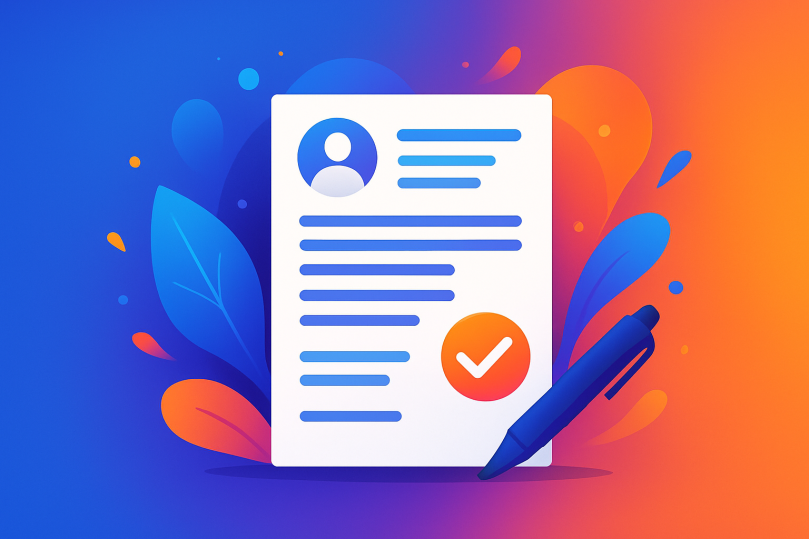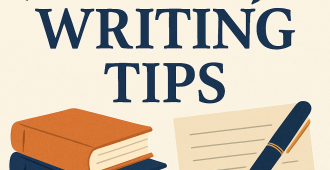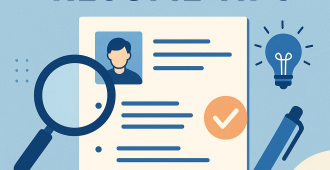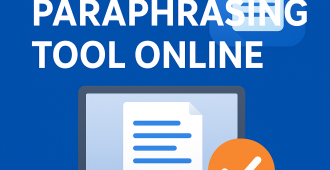In today’s competitive job market, a well-written resume is often your first — and best — opportunity to get noticed. Recruiters and hiring managers typically scan applications in seconds, so an up-to-date, ATS-friendly resume that clearly showcases your strengths and measurable impact makes a real difference.
Using the best resume writing service for your needs can save time and deliver a professional resume that improves ATS compatibility and sharpens your personal brand—helping you get interviews faster. Many employers use ATS to screen resumes, so focus on keyword fit, clear achievement statements, and clean formatting. Read on for a concise roadmap you can act on today: what to include in a strong resume, a step-by-step CV writing guide, vetted resume-writing options, and practical tips to produce an effective first draft you can iterate with AI or a human editor.
You deserve a resume that gets noticed. In a crowded job market, a clear, targeted document can be the difference between an ignored application and an interview. Many job seekers save time and improve outcomes by using resume writing services—everything from freelance marketplaces (Fiverr, Upwork) to specialist firms (Resumeble, ResumeSpice) and boutique agencies that offer one-to-one coaching and industry-specific expertise.
Professional resume writing services do more than tidy formatting: they help you present achievements clearly, align language with hiring managers’ expectations, and optimize content for applicant tracking systems (ATS). An ATS-friendly resume with the right keywords and concise accomplishment statements improves the odds your application reaches a human reviewer. This guide shows you what to include in a strong resume, a step-by-step CV writing process, how to evaluate resume writing services, and practical tips to produce an effective first draft—saving time while increasing your chances to get interviews.
How to use this guide: if you want to compare providers, skip to the “Comparing the 10 Best Resume Writing Services” section; if you prefer to DIY, follow the “Step-by-Step Guide.” Bookmark this page or download the checklist to keep the micro-templates and vendor questions handy. Note: many services also offer LinkedIn rewrites, cover letter add-ons, and interview coaching—check package details before you buy.
The Importance of a Professional Resume
A resume is more than a list of job titles — it’s a concise marketing document that communicates your credibility, accomplishments, and growth potential. Because recruiters often skim applications in seconds, clear organization and strategic wording matter: a professional resume emphasizes outcomes, uses relevant keywords, and positions your experience to match the job’s requirements.
Many candidates use freelance marketplaces like Upwork or Fiverr to find writers who offer affordable resume writing services. These lower-cost options can still provide ATS-friendly formatting and keyword-rich descriptions, but package contents vary greatly. Before you buy, vet freelancers and companies by checking recent reviews, viewing sample resumes, and confirming what each package includes (number of drafts, revisions, cover letter, LinkedIn updates, and expected turnaround) so you aren’t surprised by limits on edits or delivery time.
- Basic / Budget: Fast turnaround, low cost — good for quick polishing or entry-level resumes; may include 1 draft and minimal revisions.
- Mid-tier: Multiple drafts, a cover letter, and LinkedIn updates — balances cost and personalization for mid-career applicants.
- Premium / Executive: Hands-on coaching, industry-specialized resume writers, and in-depth messaging — best for senior roles and targeted executive searches.
- ATS Optimization: Focuses on keyword tailoring and formatting to improve automated screening outcomes — useful when many applications are processed by ATS.
- Hiring Insights: Services that include recruiter input or market research can position your resume to match recruiter expectations in specific industries.
- Credibility & Presentation: Polished format and precise language that present you as prepared and professional.
Want to see exactly what to include? Continue to the next section for an itemized checklist of resume components, followed by a step-by-step guide to help you write or refine your CV and craft a strong first draft. Download the “levels-of-service” quick guide to compare package features and revision policies before you buy.
What Should Include in a Good Resume?
Your resume needs clarity, focus, and measurable impact to capture attention. Keep it concise and targeted: every section should answer the hiring manager’s implicit question, “Why should I interview this candidate?” Below are the essential elements every professional resume should include, with micro-templates, quick examples, and copyable lines you can reuse.
1. Contact Information
What to include: full name, a professional email address, phone number, city/state (optional), and a LinkedIn URL. Tip: keep formatting simple so ATS tools and recruiters can easily parse your info.
Micro-template (header): Jane Doe | (555) 555-5555 | jane.doe@email.com | linkedin.com/in/janedoe
2. Professional Summary
What to include: a 2–3 sentence snapshot stating your target job title, years of experience, and one strong accomplishment or core skill. Write this after you draft bullets so the summary reflects your strongest evidence.
Micro-templates (pick one):
- Senior: “Senior Product Manager with 10+ years in B2B SaaS who led a cross-functional team to grow ARR by 35%.”
- Mid-level: “Product Manager with 5 years’ experience launching data-driven features that increased activation by 20%.”
- Entry-level: “Recent Business Analytics graduate with internship experience in customer insights and SQL-based reporting.”
3. Work Experience
What to include: roles in reverse chronological order, employer name, location, dates, and 3–6 achievement-focused bullet points per role. Lead each bullet with an action verb and include metrics or outcomes when possible. Tailor 2–3 bullets to match keywords in the job description for ATS matching.
Bullet micro-template: Action + Context + Result (metric)
Example (before → after):
- Before: “Managed customer onboarding.”
- After: “Redesigned onboarding for enterprise clients; reduced time-to-first-value by 25% and improved 90‑day retention by 8%.”
4. Education Background
What to include: degree, major, institution, and graduation year (optional for experienced professionals). Tip: add honors, relevant coursework, or GPA only if it strengthens your candidacy.
Example: B.S. Computer Science, University X — May 2018 (Cum Laude)
5. Skills
What to include: a concise list of 6–10 hard and soft skills that match the job posting (tools, languages, methodologies). Separate technical skills from interpersonal skills if space allows and prioritize role-critical keywords near the top so both ATS and recruiters see them quickly.
Example sections:
- Technical: SQL, Python, Tableau, REST APIs
- Methodologies & Interpersonal: Stakeholder management, Agile, cross-functional leadership
Micro-tip: identify 6–8 exact phrases from a target job posting and place them verbatim in your skills list and 2–3 bullets in your top role.
6. Certifications or Licenses
What to include: credential name, issuing organization, and year. If a certification is required or strongly preferred, highlight it near the top or in a visible “Certifications” line to boost discoverability in ATS.
Example: PMP — Project Management Institute (2021)
Industry example: For regulated roles (healthcare, finance), list relevant licenses and include license numbers if required by the employer.
7. Awards and Achievements
What to include: notable recognitions that demonstrate performance. Include award name, issuing body, year, and a short context tying it to measurable results.
Example: Salesperson of the Year, Company X — exceeded quota by 150% (2022)
8. Volunteer Work
What to include: organization, role, dates, and transferable outcomes. Use volunteer entries to show leadership, project management, or community engagement when they strengthen your target candidacy or fill employment gaps.
Example: Volunteer Project Lead, Nonprofit Y — led a 6-person team to deliver a donor CRM implementation, improving reporting speed by 40%.
9. Professional Affiliations
What to include: relevant memberships (industry associations, networking groups) and any leadership roles. Tip: include affiliations that signal current industry engagement or ongoing professional development (e.g., IEEE, SHRM).
10. Additional Sections (Optional)
What to include: publications, speaking engagements, language proficiency, technical projects, or portfolio links. Only add items that strengthen your candidacy for the specific role; for long samples, provide a portfolio link instead of embedding long text.
Step-by-Step Guide to Write a Professional CV
Your CV should be both recruiter-friendly and ATS-compatible. Oreate AI’s Resume feature helps you generate a polished first draft in minutes. Whether you’re applying for your first job, aiming for a promotion, or changing careers, Oreate AI streamlines the resume writing process — saving time while delivering high-quality results. Best of all, this feature is completely free, making it accessible to everyone. Follow these steps to create a professional CV yourself or provide clear instructions to a writer.
1) Open the Resume Feature
Start by clicking the Resume icon on your Oreate AI dashboard. The tool is designed for simplicity — no complicated menus or templates. You’ll immediately access a workspace to begin building your resume.
2) Provide Your Experience and Background
Upload your existing CV or enter a brief description of your work experience, job roles, responsibilities, and key achievements. Oreate AI analyzes your input to understand your career history and the strengths you want to highlight. Even a few sentences are enough for the AI to generate a strong first draft.
3) Generate Your Resume Draft
Once you provide your information, Oreate AI instantly produces a polished, structured resume. The draft highlights your core skills, measurable achievements, and professional strengths, giving you a resume that is recruiter-friendly and optimized for Applicant Tracking Systems (ATS). This saves you the hours or even days often spent formatting and rewriting your CV manually.
4) Edit and Refine Your Resume
Review your AI-generated draft and make any adjustments to ensure accuracy and personal voice. For enhanced phrasing and readability, you can use Oreate AI’s Paraphraser feature separately. The Paraphraser helps you improve bullet points, summaries, and skill descriptions — making your resume more compelling, clear, and optimized for both recruiters and ATS systems.
5) Download Your Final Resume
After finalizing edits, download your completed resume in Word or PDF format. Your resume is now ready to submit to potential employers, showcasing your achievements and qualifications in a clear, professional format.
6) Review, Edit, and Tailor for Each Job
Final review checklist (3 quick steps):
- Edit for clarity and eliminate passive phrasing; shorten long bullets.
- Tailor: update 2–3 bullets and the summary to reflect the specific job posting.
- Run an ATS scan and a grammar check, then have a peer or a professional resume writer review the draft.
Pro Tip: Start with the Resume feature to quickly generate a solid first draft, then use Paraphraser to refine language, improve bullet points, and ensure ATS-friendly phrasing. This two-step approach maximizes both efficiency and impact, helping you stand out in competitive job markets.
What to send to a resume writer (copyable checklist)
- Your current resume (editable file).
- At least one target job posting (preferably two) — include links or full text.
- Your LinkedIn URL and any portfolio links.
- A short note about your career goals and the titles you want (2–3 sentences).
- 3–4 recent bullet points and 2–3 metrics you want emphasized.
Sample one-line brief to a writer (copy/paste): “Please rewrite my resume for Senior Product Manager roles in B2B SaaS. Target job links attached; highlight product-led growth metrics and leadership across cross-functional teams. I’d like two summary options and up to two rounds of revisions.”
Quick copy-paste sentence starters for bullets
- “Led a cross-functional team to [action], resulting in [metric/outcome].”
- “Implemented [tool/process] to reduce [time/cost] by [%/$], improving [metric].”
- “Designed and launched [initiative] that increased [KPIs] by [%/$] within [timeframe].”
Hybrid workflow recommendation: AI first draft + human polish
If you want to save time and compare first drafts quickly, use an AI tool (for example, Oreate AI) to generate a fast initial draft with clear inputs: target job title, 3–4 recent bullet points, 2–3 metrics, top skills, and the job posting link. Then verify all facts, add 4–8 exact keywords from the job posting, and send the AI draft plus job link to a professional resume writer for final tailoring and tone adjustments. This hybrid approach combines speed with industry-specific nuance.
Final note: treat the guidance above as best-practice recommendations — adjust counts (skills, bullets) to fit your level and industry. When in doubt, prioritize relevance, clarity, and measurable outcomes; those changes most consistently help resumes get noticed by recruiters and pass ATS filters.
Comparing the 10 Best Resume Writing Services
When you research professional resume writing services, the right choice depends on budget, turnaround, and the level of personalization you need. The table below (original) shows typical starting prices and common turnaround windows for popular providers — treat these figures as approximate “from” values and verify current pricing on each company’s site before purchasing. Prices and turnaround times fluctuate; confirm details on the provider’s site on the day you order.
How we evaluated these providers: ATS optimization focus, writer expertise (industry specialization), revision policy, and whether the service offers coaching or interview guarantees. Some providers emphasize fast delivery or low cost (freelance marketplaces); others focus on industry specialization, hands-on coaching, or interview guarantees. If you’re unsure, request a free resume review or a sample edit where available — several firms offer quick assessments to help you decide.
Below are concise profiles (10 tools) with practical decision cues. Each profile includes a short description, pros, cons, and a starting pricing/turnaround note. Note: starting prices and turnaround are estimates — verify current details before ordering.
1. Oreate AI — Oreate AI’s Resume feature helps users instantly create professional, ATS-optimized resumes. It focuses on fast first-draft generation, clear structure, and easy personalization — all for free.
- Pros:Fast and accurate first-draft creation;Strong keyword optimization for ATS; Easy to edit and personalize; Free to use.
- Cons:May generate generic phrasing with limited input; Lacks deep industry nuance without human refinement.
- Pricing / Turnaround: Free feature (verify on the official site). Drafts are generated instantly and can be refined in minutes.
- Best for:Users who want a quick, optimized resume foundation to refine and finalize for professional submission.
2. TopResume — Mid-tier provider offering free resume reviews and professional rewrites by vetted writers.
- Pros: Free initial review; experienced resume writers; streamlined rewrite packages.
- Cons: Base packages can be less hands-on; higher tiers required for coaching or executive-level messaging.
- Pricing / Turnaround: From ~$149; typical turnaround ~5–7 days (verify current pricing).
- Best for: Reliable mid-level rewrites and those who want a straightforward professional resume service.
3. ResumeSpice — Full-service option created by recruiters, offering phone consultations and recruiter-informed drafts.
- Pros: Recruiter-informed content; phone consultations; targeted drafts for mid-senior roles.
- Cons: Higher starting price; may be overkill for entry-level needs.
- Pricing / Turnaround: From ~$279; turnaround ~2–5 days depending on package (verify).
- Best for: Senior candidates seeking hands-on, recruiter-informed resumes and coaching.
4. Resumeble — ATS-first writing service that emphasizes keyword tailoring and ATS formatting.
- Pros: Strong ATS optimization; keyword tailoring; clear formatting.
- Cons: Limited coaching in lower-tier packages; may require additional tailoring for niche industries.
- Pricing / Turnaround: From ~$149; turnaround ~3–7 days (verify).
- Best for: Applicants prioritizing ATS compliance and keyword matching.
5. ResumeWriters.com — Agency with industry-specialized writers and faster turnaround options.
- Pros: Industry-specialized writers; faster turnaround options; multiple package tiers.
- Cons: Executive packages can be pricier; quality varies by writer level.
- Pricing / Turnaround: From ~$169; many packages offer ~72-hour turnaround (verify).
- Best for: Candidates who need sector expertise and quick delivery.
6. Top Stack — Boutique resume and career service offering bespoke packages and faster personal turnaround.
- Pros: Bespoke, boutique-level attention; faster one-on-one communication; customizable packages.
- Cons: Smaller teams can mean limited availability; pricing varies by writer experience.
- Pricing / Turnaround: Starting estimates vary widely—often from ~$149; turnaround typically faster for boutique packages (verify).
- Best for: Professionals who want a tailored resume and direct access to a dedicated writer.
7. Resume Zest — Boutique provider focused on personalized resumes and quick revisions.
- Pros: Personalized attention; quick revisions; often strong client communication.
- Cons: Smaller scale; sample resumes and credentials should be requested.
- Pricing / Turnaround: From ~$120–$250 depending on package; turnaround ~2–5 days (verify).
- Best for: Applicants seeking boutique-style service without the highest executive price tag.
8. JRC Professionals — Boutique and industry-aware writers offering targeted packages and branding support.
- Pros: Industry-aware messaging; branding and LinkedIn add-ons; hands-on revisions.
- Cons: Availability can be limited; verify writer credentials for your sector.
- Pricing / Turnaround: From ~$150–$300; turnaround varies by package (verify).
- Best for: Mid-to-senior professionals who want brand-focused resumes and LinkedIn alignment.
9. CareerPerfect — Affordable service with quick revisions and straightforward packages.
- Pros: Budget-friendly; quick revision cycles; clear packages.
- Cons: Templates can feel generic without additional customization; may require extra tailoring for senior roles.
- Pricing / Turnaround: From ~$99; turnaround ~1–3 days for basic edits (verify).
- Best for: Quick refreshes and budget-conscious applicants who need fast delivery.
10. Resume Marketplace Options (Fiverr / Upwork) — Freelance marketplaces where you can hire individual resume writers across price ranges.
- Pros: Wide range of prices and writers; can be extremely affordable; direct communication with freelancers.
- Cons: Quality varies widely; requires careful vetting of reviews, samples, and revisions policy.
- Pricing / Turnaround: From as low as ~$30 on Fiverr; turnaround varies widely (hours to weeks) depending on freelancer (verify).
- Best for: Tight budgets or highly customized one-off projects when you can invest time to vet and interview freelancers.
How to read these profiles: “From $” indicates starting prices; turnaround is a typical range or common timeframe; “Best for” highlights common use cases. Before you commit, ask providers about revision limits, sample resumes in your industry, who will write your resume (writer credentials), and any interview guarantee terms — then record the date you checked pricing so you can compare accurately.
Recommendation: Use a hybrid workflow for the best balance of speed and quality — generate a fast first draft with Oreate AI to get consistent keyword suggestions and a polished structure, then send that draft plus a target job posting and your LinkedIn URL to a vetted resume writer or resume writing service for final industry-specific polishing and tone adjustments.
CTA: Before you buy, request an anonymized sample resume from your shortlisted providers, confirm revision policies, and ask whether interview guarantees have published terms. If you’d like, I can draft the 10 short vendor profiles in a downloadable comparison table format (with consistent pricing notes and a sample email template to request a sample edit).
How to Choose the Best Resume Writing Service for You?
Decide what matters most to your job search: customer feedback, pricing, turnaround time, industry expertise, or a deep, coached rewrite. Narrow your options to 2–3 services before you buy by using the checklist and scorecard below.
- Customer feedback & reviews: Read recent reviews on multiple platforms (Trustpilot, Google, LinkedIn). Look for repeat patterns in praise or complaints (communication, quality of drafts, revision responsiveness).
- Pricing & package contents: Compare what each package includes (number of drafts, included cover letter, LinkedIn rewrite, and revisions). Lower cost can be fine for a quick polish; higher tiers usually include coaching, industry messaging, and more revision rounds.
- Turnaround: If timing matters, prioritize services that advertise 24–72 hour delivery and fast revisions—but always verify current turnaround claims on the company site before ordering.
- Industry expertise: Prefer services or writers with proven experience in your field (tech, healthcare, finance, etc.). Ask for anonymized sample resumes in your sector and check writer bios for years of experience and relevant projects.
- Guarantees & policies: Clarify any interview guarantee’s exact terms and what the company requires from you. A guarantee without published terms is a red flag.
- Communication & process: Choose services that provide a named writer, clear timelines, and a straightforward revision workflow so you can review drafts and request changes efficiently.
Modern tools like Oreate AI can complement traditional services by quickly generating optimized drafts while preserving a natural, humanized tone. This allows you to refine your resume efficiently, improve language and structure, and ensure your application reflects both professionalism and authenticity.
Tips for Writing a Resume That Stands Out
Your resume is a tool to show hiring managers why you’re the best candidate. Apply these practical tips to make your document clearer, more persuasive, and more likely to pass ATS filters. Small, targeted edits often produce the biggest gains in interview response rates.
Below are five high-impact strategies with quick examples, micro-templates for different seniority levels and fields, an ATS micro-tip, and a short pre-submit checklist you can copy.
1) Tailor to the Job
Tip: Study the job description and mirror relevant language—prioritize the experience and skills that map directly to the employer’s requirements. Tailoring improves recruiter recognition and ATS matching.
Before: “Managed marketing projects.”
After: “Led a cross-channel marketing program that increased lead generation by 40% for a B2B SaaS product (12-month period).”
Micro-templates by level:
- Entry-level: “[Degree] graduate with internship experience in [area]; supported [project] that produced [result].”
- Mid-level: “[Title] with [X years] experience in [industry]; led [initiative] that delivered [metric].”
- Senior/executive: “Senior [Title] with [X years] leading cross-functional teams to deliver [business outcome, %/$/timeframe].”
2) Highlight Achievements with Metrics
Tip: Replace vague tasks with measurable outcomes—percentages, dollar values, time saved, headcount, or customer metrics. Quantified achievements show impact quickly and help recruiters scan for results.
Before: “Improved customer onboarding.”
After: “Redesigned onboarding to shorten time-to-first-value by 25% and boost 90-day retention by 10%.”
3) Keep It Concise
Tip: Use 3–6 bullets per role and keep sentences short and active. Early-career resumes commonly fit one page; mid-to-senior profiles may span two pages if all content is relevant and tightly written. Prioritize relevance over length.
4) Use a Clean, Professional Layout
Tip: Choose legible fonts, consistent spacing, and clear section headers. Avoid heavy graphics or complex two-column layouts that ATS systems may misread—unless the role expects a visual portfolio. Always keep an ATS-friendly plain-text version for uploads.
5) Proofread and Edit
Tip: Typos and inconsistent formatting hurt credibility. Read your resume aloud, use a grammar checker, and ask a trusted industry peer to review for clarity and accuracy.
Field-specific micro-templates & before/after examples
- Technical (example) — Before: “Maintained ETL pipelines.” After: “Built and maintained ETL pipelines using Python and Airflow, improving daily data reliability by 30% and reducing processing time by 2 hours.”
- Managerial (example) — Before: “Managed a product team.” After: “Led a 10-person product team to launch a new SaaS module that generated $1.2M ARR in year one and improved NPS by 18 points.”
- Creative (example) — Before: “Designed marketing collateral.” After: “Designed a cross-channel campaign that increased demo requests by 28% and improved conversion rate by 12%.”
ATS micro-tip
How to check keyword use and placement: paste a target job posting into a plain-text editor, highlight the 6–8 most repeated or role-critical phrases (exact words), and ensure those phrases appear naturally in your summary, skills section, and 2–3 bullets in your most relevant role. Avoid keyword stuffing—combine keywords with metrics so the resume reads well to both ATS and humans.
Before you submit — short checklist
- Tailor 2–3 bullets in your top role to the job posting.
- Add 6 role-critical keywords to your skills and bullets (use exact phrases from the posting).
- Run an ATS scan and a grammar check (use a trusted tool or ask a professional resume writer to review).
- Confirm formatting: single column, clear headings, consistent dates.
- Have a peer or a professional resume writer review the first draft for tone and accuracy.
Quick pre-submit routine (copyable): 1) Generate or update tailored draft for the role; 2) Run ATS & grammar checks; 3) Send to a human reviewer (peer or professional resume writer) — this workflow helps maximize chances to get interviews.
Internal note: see the “Step-by-Step Guide” for additional micro-templates and the “Comparing the 10 Best Resume Writing Services” section if you prefer to outsource optimization; many resume writing services and experienced writers can produce a tailored first draft and handle ATS optimization for you.
Resume Examples: How to Use Them for Inspiration
Resume examples are valuable learning tools: they show structure, language, and how achievement-driven bullets look across industries. Use examples to borrow formatting ideas and strong action verbs—but never copy someone else’s content verbatim. Personalize each example so it reflects your exact responsibilities, measurable outcomes, and career background.
How to use examples effectively:
- Identify placement of skills vs. experience—technical roles often prioritize tools and certifications near the top; leadership roles highlight strategic wins and team scope.
- Note strong action verbs (designed, implemented, scaled) and adapt them to describe your results with numbers and context.
- Keep authenticity—use examples to inspire structure and phrasing, then tailor content to your career story and the target job posting.
Industry note: Technical resumes (software, engineering) should include tools, languages, and relevant metrics (throughput, uptime, deployments). Creative resumes (design, marketing) can include portfolio links and visual samples, but always keep an ATS-friendly plain-text version for uploads.
Sample bullets you can adapt (copy/paste and edit to match your facts):
- Technical (mid-level): “Built and maintained ETL pipelines using Python and Airflow, improving data ingestion reliability by 30% and reducing daily processing time by 2 hours.”
- Managerial (senior): “Led a 10-person product team to launch a new SaaS module that increased ARR by $1.2M in the first year and improved NPS by 18 points.”
- Early-career (entry-level): “Supported UX research for a mobile redesign; synthesized user feedback into 12 design recommendations adopted by the product team.”li>
- Finance (sample): “Automated monthly financial close tasks, reducing close time from 12 days to 6 days and improving reporting accuracy by 98%.”
- Healthcare (sample): “Coordinated a clinical workflow redesign that decreased patient wait times by 22% and increased care-team utilization by 15%.”li>
How to extract 6–10 skills from a job ad: paste the job posting into a plain-text editor, circle or highlight repeated phrases and tool names (those repeated 2+ times usually matter), then select 6–10 that match your real experience. Place those exact phrases in your skills section and weave 2–3 into your top role bullets.
How to anonymize an example before sharing or asking for feedback:
- Remove company names and replace them with industry descriptors (e.g., “Global SaaS company”).
- Round or remove highly specific financial figures if they are proprietary, while keeping meaningful percentages or ranges.
- Strip personal identifiers (project codes, client names) and keep role, scope, and results.
Quick checklist (use as a template):
- Professional summary: 2–3 lines with title, years, and one key achievement.
- Skills section: 6–10 keywords that match the job posting (exact phrases when possible).
- Experience bullets: start with an action verb and include at least one metric where possible.
- Education & certifications: include only relevant entries; move critical certifications up near the top.
- Final step: save an ATS-friendly plain-text version, run an ATS check and grammar check, and ask a peer or mentor for a read-through.
- If you prefer to outsource optimization, see the “Comparing the 10 Best Resume Writing Services” section to match your budget and turnaround needs — or use a hybrid approach: generate a fast AI first draft (for example, with Oreate AI) and hire a professional resume writer to polish and tailor the final version.
Want more examples? Consider downloading a set of 10 sample bullets by industry to adapt—these help you see how to craft measurable, ATS-friendly lines for resumes and make it easier to work with resume writers or resume writing services.
Using AI Tools I to Edit and Enhance Your Resume
- AI tools can speed up resume writing by producing a polished first draft, suggesting relevant keywords, and catching grammar or formatting issues. Platforms such as Resume.io and Oreate AI offer fast drafting and template options that help you produce a professional-looking resume quickly—especially useful when you want a usable first draft to iterate from or instant suggestions for ATS-friendly phrasing.
- That said, AI-generated content can be generic or occasionally introduce inaccuracies. The best approach pairs AI speed with human expertise: use AI to create an initial draft, then have a professional resume writer or a trusted industry peer refine tone, industry language, and factual details. This hybrid workflow preserves automation’s time savings while ensuring the final professional resume reads authentically and is tailored to the role.
- AI pros and cons — quick view:
- Pros: very fast first-draft generation; consistent keyword suggestions for ATS; quick grammar and formatting fixes that reduce initial writing time and cost.
- Cons: potential for generic phrasing; missing role-specific nuance; occasional invented or incorrect specifics that require verification.
- How to use AI responsibly (AI + Human checklist)
- Step 1 — Draft (AI): Provide clear inputs to the generator: target job title, 3–4 recent bullet points, 2–3 metrics, top skills, and a target job posting link or text. This yields a stronger first draft than a vague prompt.
- Step 2 — Verify (human): Manually check all dates, job titles, company names, and accomplishments for accuracy; remove or correct any invented specifics the AI may add.
- Step 3 — Tailor (human/AI): Add 4–8 exact keywords from the target job posting into your summary, skills list, and 2–3 bullets in your most relevant role so ATS picks them up naturally.
- Step 4 — Polish (human): Ask a professional resume writer or an industry peer to review tone, metrics, and positioning for the role and produce the final edited resume.
Common Mistakes to Avoid
- Whether you write your resume yourself, use AI, or hire a service, avoid these frequent pitfalls—each one reduces your chances of getting an interview.
Top resume mistakes and quick fixes
- Overly fancy graphics or complex layouts
- Problem: Many ATS systems misread images, charts, and multi-column formats. Fix: Use a clean, single-column layout, simple headings, and standard fonts (e.g., Arial, Calibri, Times New Roman).
- Typos, grammar errors, or inconsistent formatting
- Problem: Small mistakes undermine credibility. Fix: Run a grammar check, read aloud, and ask a peer to proofread. Tools: Grammarly, Microsoft Editor, or a human reviewer.
- Missing keywords from the job description
- Problem: ATS may filter out resumes lacking role-specific terms. Fix: Extract 6–8 exact phrases from the job posting and weave them naturally into your summary, skills, and 2–3 bullets in your top role.
- Irrelevant or filler content
- Problem: Non-essential duties dilute your achievements. Fix: Replace tasks with measurable impact—use the formula: Action + Result + Metric.
Practical micro-checklists
- 5-second scan heuristic (quick test): Can a hiring manager identify your job title, years of experience, and one major accomplishment within five seconds? If not, simplify your header and move a strong metric to the top.
- Simplify wordy bullets: Convert long task lines into tight achievement bullets—example: change “Responsible for customer onboarding and training” to “Reduced onboarding time by 25% through automated training modules, improving 90‑day retention.”
- ATS formatting checklist: single-column layout; consistent date format (e.g., “Jan 2020 – Dec 2022”); standard fonts; no images/tables in main text; include a clear skills section with exact phrases.
Workflow recommendation if you’re unsure
- Quick, low-cost option: generate a first draft with an AI tool (e.g., Oreate AI) to save time, then run an ATS check and a grammar pass.
- Polish step: send the draft plus a target job posting and your LinkedIn URL to a vetted resume writer or a resume writing service for final optimization and tailoring. Include a note about the exact job titles you want to target and any industry-specific keywords.
- Red flags when choosing a service: no verifiable samples, vague revision policy, unsupported guarantees, or a writer with no industry experience.
Real-world vendor red flags (short list): 1) No anonymized sample resumes for your industry; 2) Guarantees with no written terms; 3) No named writer or unclear revision turnaround.
Vendor vetting checklist (copy/paste into an email): “Please send one anonymized sample resume in my industry, your revision policy (rounds and turnaround), writer credentials for the assigned writer, and any guarantee terms in writing. Also confirm estimated pricing and delivery date.”
If your site offers a free resume audit or ATS scan, consider using it as a sanity check before you purchase editing services—quick scans help prioritize the highest-impact fixes and shorten turnaround time for a final polished resume.
Conclusion
- You can shape your next career move by presenting your background clearly and strategically. In a fast-paced hiring landscape, a curated, ATS-friendly resume that highlights measurable accomplishments helps recruiters pause and invite you to interview—think of your resume as a focused marketing document that sells your ability to deliver results.
- Upgrading your CV requires clarity, structure, and a focus on impact. Professional resume writing services are a smart option when you want expert help—whether that’s a quick polish, a full rewrite, or a bundled LinkedIn and cover letter package. Evaluate providers by turnaround, included revisions, writer expertise, and any guarantee terms before you buy.
- Use the tactics in this guide: tailor each application, quantify achievements, keep the layout clean, and proofread carefully. A practical workflow that often produces the best results is: generate a fast first draft (AI or self-write), run an ATS check, then have a professional resume writer or reputable resume writing service polish and tailor the final draft for your target roles.
- Final action — start now (copyable 3-step): (1) Generate a first draft (for speed, try Oreate AI to create a keyword-optimized draft); (2) Run an ATS scan and a grammar check; (3) Shortlist 2–3 vetted resume writing services, request anonymized sample edits, and pick the writer or service with the best combination of turnaround, revisions, and industry expertise.
Quick reminder: verify current pricing, guarantee terms, and turnaround directly with each company before ordering—and note the date you checked those details so you can compare offers accurately.
Author note: recommendations and comparisons in this guide were compiled from publicly available provider information and common industry practices; treat the hybrid AI + human workflow as a recommended process to save time and improve results, not a guarantee of interviews.
FAQ
1)How often do you need to tailor your resume?
Tailor your resume for every role you apply to. Customize your professional summary, select 6–8 exact keywords from the job description, and update two to three bullets in your most relevant position to reflect those requirements. Small targeted changes often yield the biggest improvements in ATS matching and recruiter response.
2)What are some tips for writing a resume that stands out?
Use keywords from the job listing, highlight quantifiable accomplishments, keep formatting simple and consistent, and ensure your contact details and professional summary are clear. Run an ATS check and a grammar review, and ask a peer or professional resume writer to review your first draft before applying.
3)How do you choose the best resume writing service for your needs?
Compare services on customer feedback, pricing, turnaround time, included revisions, and industry expertise. Read recent reviews, request anonymized sample resumes in your sector, and verify ATS compliance. Shortlist 2–3 providers, request a sample edit or free review, and use a simple scorecard (reviews, pricing/value, turnaround, expertise, revision policy) to pick the best match.
4)How do affordable resume writing services help you compete in a tough job market?
Affordable resume writing services can polish formatting, insert relevant keywords, and clarify your biggest achievements. Even a focused edit can improve ATS performance and credibility with hiring teams. If budget is tight, consider a hybrid approach: generate a first draft with an AI tool (like Oreate AI) and then pay for a single professional edit or targeted revision.
5)How long should my resume be?
One page is common for early-career candidates. Mid-level professionals often use one page unless they have extensive relevant experience; senior and executive resumes may extend to two pages when all content is highly relevant. Prioritize concise, outcome-focused content: relevance beats length.












